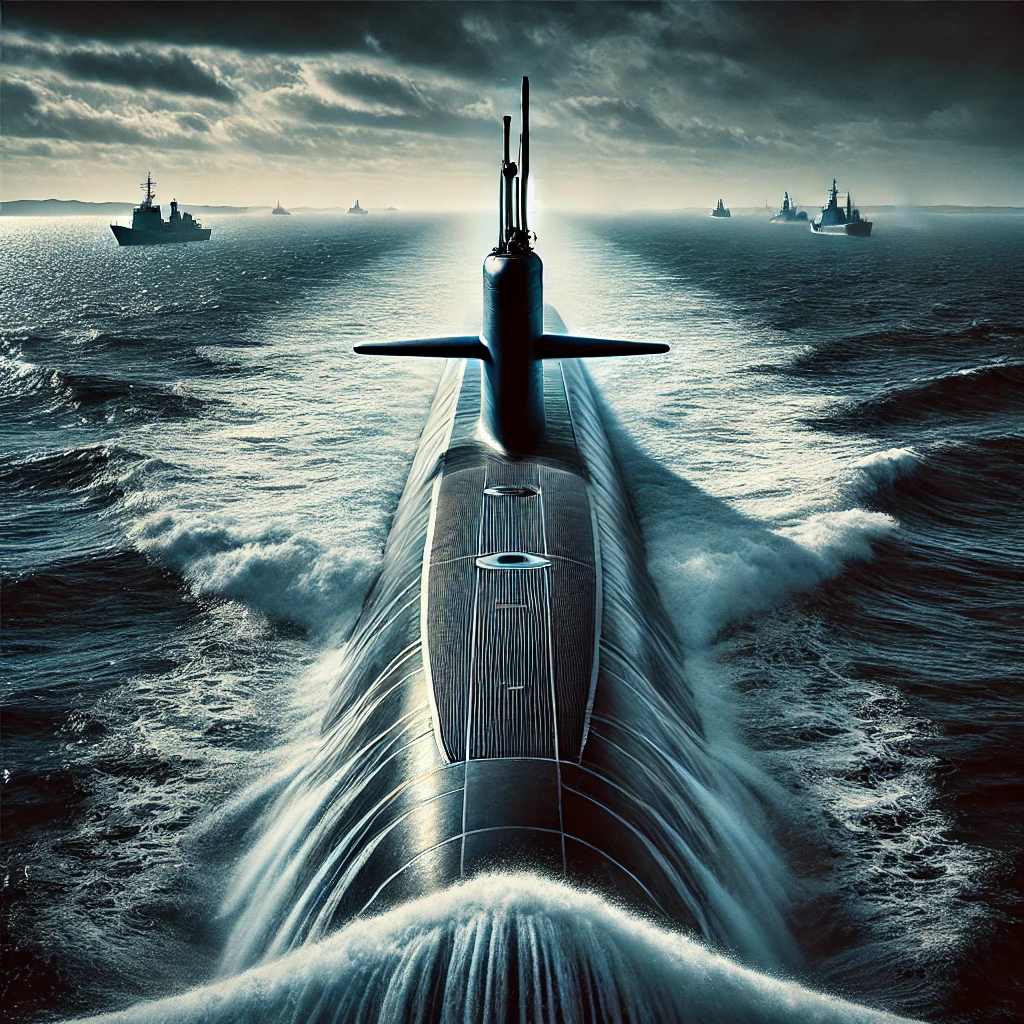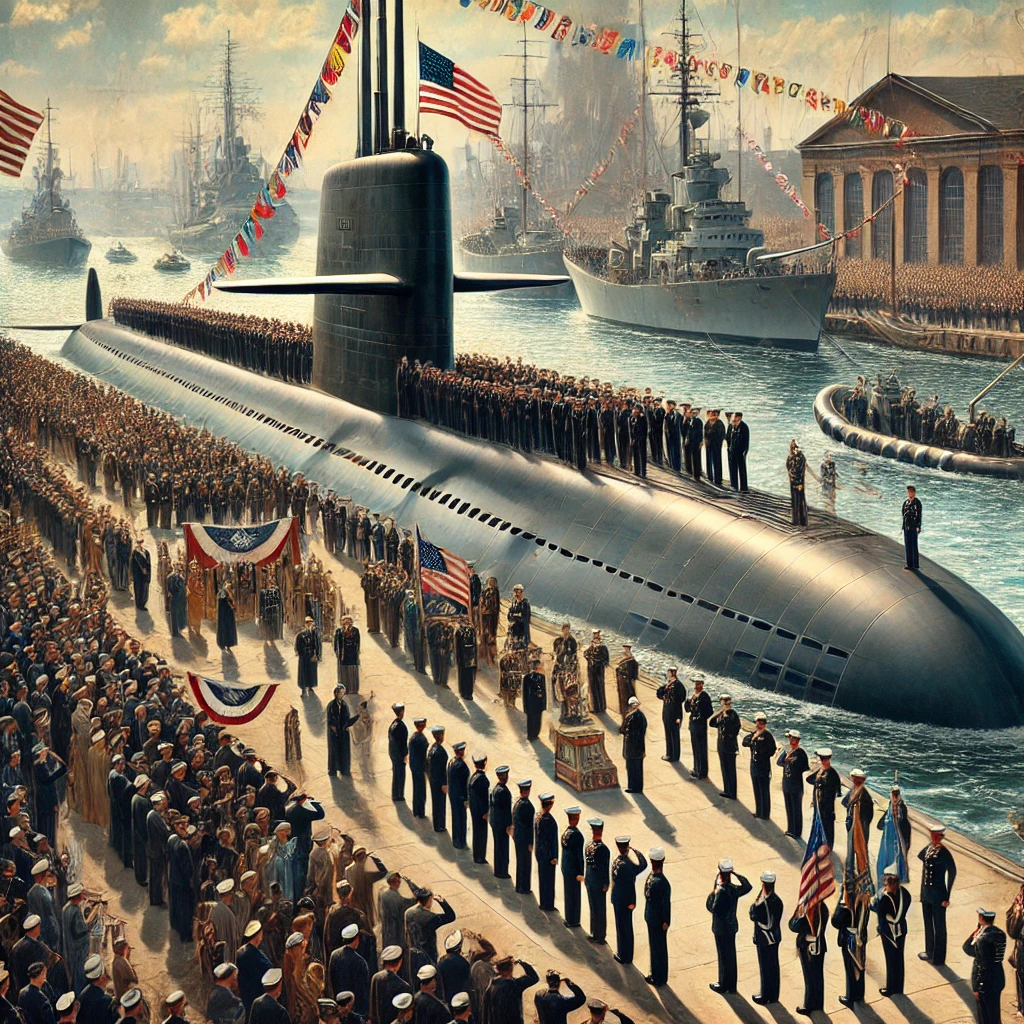On September 30, 1954, the USS Nautilus was officially commissioned by the United States Navy, marking a revolutionary advancement in naval technology. As the world’s first nuclear-powered submarine, the Nautilus ushered in a new era of underwater warfare and exploration. Its commissioning not only showcased the United States’ technological prowess during the Cold War but also laid the groundwork for the future of naval engineering and military strategy.

A Revolutionary Engineering Feat
The development of the USS Nautilus was a significant engineering achievement, representing years of research and innovation in nuclear propulsion. Designed by a team led by Rear Admiral Hyman G. Rickover, the Nautilus utilized a nuclear reactor to generate steam, powering its propulsion system and allowing for unprecedented underwater endurance and speed. This advancement eliminated the need for surface refueling, enabling the submarine to operate submerged for extended periods.
The Nautilus was a marvel of its time, with a hull designed for both stealth and performance. Its capabilities allowed it to travel greater distances without surfacing, giving the U.S. Navy a strategic advantage in Cold War naval operations. The commissioning of the Nautilus demonstrated the potential of nuclear technology in military applications, paving the way for subsequent classes of nuclear submarines.

Strategic Significance During the Cold War
The commissioning of the USS Nautilus occurred at a time when tensions between the United States and the Soviet Union were escalating. The Cold War was characterized by a race for technological superiority, and nuclear capabilities were central to military strategy. The Nautilus not only represented a leap in naval technology but also served as a symbol of American strength and innovation.
The submarine’s ability to remain submerged for long durations allowed the U.S. Navy to conduct covert operations and gather intelligence, reinforcing its role as a crucial component of national defense. The presence of nuclear submarines like the Nautilus altered the balance of power at sea, providing a deterrent against potential adversaries and solidifying the U.S. Navy’s reputation as a formidable force.
Pioneering Underwater Exploration
Beyond its military significance, the USS Nautilus also played a vital role in pioneering underwater exploration. The submarine embarked on groundbreaking missions, including the first voyage to the North Pole by a submarine in 1958, demonstrating the potential of nuclear power for scientific research and exploration. This achievement opened new frontiers for oceanography and established the United States as a leader in underwater exploration.

The Nautilus’s missions contributed to scientific knowledge about the Arctic and its ecosystems, providing valuable data that would inform future research and environmental policies. Its explorations demonstrated the versatility of nuclear submarines beyond military applications, highlighting their potential for scientific inquiry and maritime exploration.
Lasting Impact on Naval Technology
The legacy of the USS Nautilus extends far beyond its own service. Its successful commissioning paved the way for the development of a fleet of nuclear-powered submarines that have since become a cornerstone of modern naval strategy. Today, nuclear submarines are essential components of the U.S. Navy, providing capabilities for deterrence, surveillance, and power projection.
The innovations introduced by the Nautilus have influenced not only military applications but also advancements in civilian maritime technology. Nuclear propulsion has been adapted for various uses, including research vessels and icebreakers, showcasing the broader impact of this technological breakthrough on global maritime operations.
The commissioning of the USS Nautilus on September 30, 1954, marked a watershed moment in naval history and the use of nuclear power. This groundbreaking vessel not only enhanced U.S. military capabilities during the Cold War but also paved the way for scientific exploration of the oceans. As we reflect on the significance of the Nautilus, we acknowledge its enduring legacy in shaping modern naval technology and its role in expanding the frontiers of human knowledge. The achievements of the USS Nautilus continue to inspire advancements in engineering and exploration, highlighting the potential of innovation in shaping our world.
